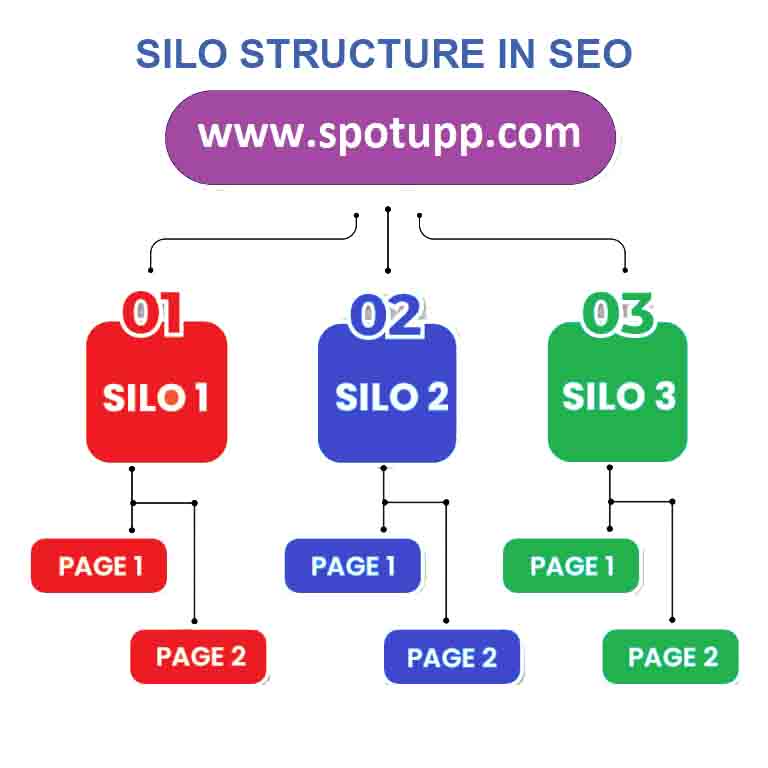The Silo Structure is an SEO strategy that involves organizing a website’s content into distinct categories or “silos.” Each silo contains related content that is grouped together, helping to create a clear and logical hierarchy of information. This approach enhances both user experience and search engine understanding of your site’s topical relevance.
Key Characteristics:
- Thematic Grouping:
- Content is grouped into silos based on specific themes or topics.
- Each silo focuses on a particular subject, making it easier for users to find related content.
- Hierarchical Organization:
- Within each silo, content is organized hierarchically, typically starting with a broad topic and narrowing down to more specific subtopics.
- This structure helps search engines understand the relationship between different pieces of content.
- Internal Linking:
- Strong internal linking within each silo ensures that all pages within the silo are connected.
- This improves the flow of link equity and enhances the SEO value of each page within the silo.
Benefits:
- Improved SEO Performance:
- By organizing content into silos, you signal to search engines that your site covers specific topics comprehensively.
- This can improve your site’s authority and ranking for those topics.
- Enhanced User Experience:
- Users can easily navigate through related content within a silo, finding the information they need without jumping between unrelated pages.
- This improves engagement and reduces bounce rates.
- Better Crawlability:
- A well-structured silo makes it easier for search engine crawlers to navigate and index your site.
- Clear hierarchical paths within silos help ensure that all relevant content is discovered and indexed.
Implementing a Silo Structure:
- Identify Key Topics:
- Determine the main topics or themes that your website will cover.
- These will form the basis of your silos.
- Create Subtopics:
- Within each silo, identify subtopics that fall under the main topic.
- Develop content for each subtopic to build out the silo.
- Organize Content:
- Arrange your content hierarchically within each silo, starting with broad topics and moving to more specific subtopics.
- Use clear and descriptive URLs that reflect the hierarchical structure.
- Internal Linking:
- Ensure strong internal linking within each silo, connecting related pages.
- Avoid excessive linking between different silos to maintain thematic relevance.
Example:
- Silo 1: Digital Marketing:
- Main Page: “Digital Marketing Overview”
- Subpages: “SEO Basics,” “Content Marketing Strategies,” “Social Media Marketing”
- Silo 2: Web Development:
- Main Page: “Web Development Guide”
- Subpages: “HTML & CSS,” “JavaScript Fundamentals,” “Responsive Design”
The Silo Structure is a powerful way to organize website content, enhancing both SEO and user experience. By grouping related content into distinct silos and maintaining a clear hierarchical structure, you can improve your site’s authority on specific topics, make it easier for users to navigate, and ensure efficient crawlability for search engines. Implementing a silo structure can lead to better search engine rankings and a more engaged audience.
Transform Your SEO with Expert Silo Structuring
Ready to boost your website’s SEO and user experience? Contact us today to implement a Silo Structure and other advanced SEO strategies. Let’s optimize your site for maximum performance and visibility!


